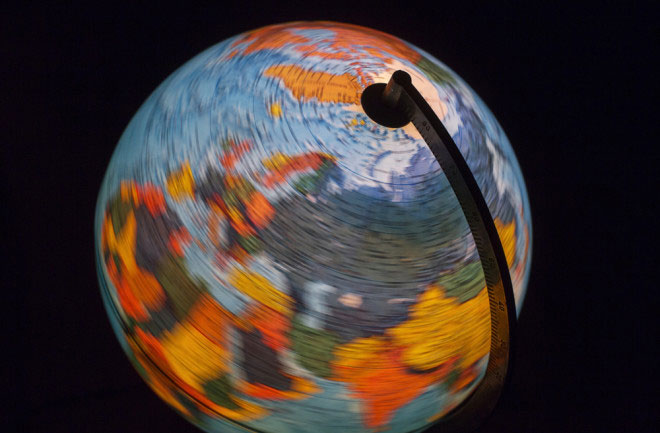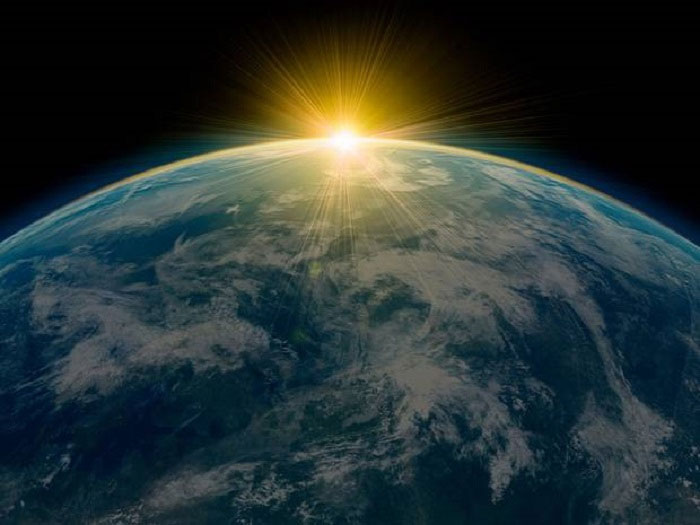There would be severe consequences for humanity if the Earth suddenly stopped spinning. But is this even a possibility?
In the 1951 film The Day the Earth Stood Still, an alien named Klaatu and his robot companion Gort managed to disable nearly all electronic devices on Earth simultaneously. He accomplished this using advanced alien technology. As a result, cars, factories, TVs, and many other things ceased to function, and Earth fell into a very strange state of suspension.
But what if that movie took a different, grander direction? Imagine an alien with a powerful tool capable of stopping the Earth from spinning. In that case, the plot of The Day the Earth Stood Still would be far more catastrophic.
We might not realize it, but the rotation of the Earth is fundamental to the most basic aspects of this planet. We might not exist if the Earth were to stop spinning and remain stationary.

We might not exist if the Earth were to stop spinning and remain stationary.
What Happens When the Earth Stops Spinning?
If the Earth were to stop spinning, catastrophic disasters would occur across much of the planet’s surface. We may not be aware, but the Earth rotates at a speed of approximately 1,657 km/h at all times. If this planet were to suddenly halt, everything on it would be propelled eastward. People, houses, trees, and more would be thrown at hundreds of miles per hour. Along with this, extreme winds would sweep away many objects on the surface.
If the process of the Earth’s rotation stopping were gradual, its effects would still be significant. The first thing we might notice is that the sun would no longer move across the sky throughout the day. If our planet were to stand still, a day would last for half a year. Consequently, sunsets would last for an extended period.
At that point, a day would no longer be 24 hours, and human biological rhythms would be completely altered. The functioning of cells that inform the body when to sleep and wake depends partly on the regular changes in sunlight. Many organisms on Earth, from bees to trees, rely on biological rhythms to sustain life. Altering this cycle could disrupt normal behavioral patterns.
The atmosphere is also closely tied to the Earth’s rotational movement. The cessation of this rotation would significantly change how air currents move. The types of winds we see today play a crucial role in driving rainfall and temperatures globally. Any changes in air currents could lead to desertification occurring in forests. The outcome of this process could be disastrous for species that depend on specific environments.
If the Earth stops spinning, it would mean that storms would no longer occur. They are generated by the Coriolis force resulting from the Earth’s rotation. The air currents drawn into the low-pressure area of a developing storm rotate counterclockwise in the Northern Hemisphere and clockwise in the Southern Hemisphere, leading to spiral patterns and eyes at the center of a storm. This process is one of the reasons storms can develop so intensely; the Earth stopping its rotation would prevent them from forming.
The cessation of the Earth’s rotation could also spell the end for the magnetic field. Although still debated, scientists believe that the magnetic field is generated by the movements of the Earth’s liquid metal core. The impact of losing the magnetic field would be far worse than simply not having a compass. Earth’s magnetic field protects us from cosmic rays and electromagnetic storms from the sun.

If the Earth stops spinning, catastrophic disasters would occur.
Could the Earth Ever Stop Spinning?
As far as humanity knows today, there are no planets in the universe that do not rotate at all. The formation of planets and celestial bodies leads to rotation. This means that all planets have been spinning since they were ‘born’. However, there are some planets that “appear not to spin”, and astronomers refer to these as tidally locked.
These are planets that always face one side toward their host star, resulting in one half being in perpetual day and the other half in perpetual night. The gravitational pull between the planet and the star can gradually slow the rotation speed until it precisely matches the orbital period.
The Moon is a classic example of tidal locking. We can only see one side of the Moon, regardless of its position in the sky. This is because the Moon is tightly locked to the Earth. A similar situation can occur with many exoplanets, especially those very close to their host star, where the gravitational forces are extremely strong.
While such planets would have one half in day and the other half in night, scientists believe that life could still emerge. It would occur in areas close to where day transitions to night.
Ultimately, the Earth will never be tidally locked by the sun. We are too far from our star for that to happen. Although the Earth’s rotation is slowing down slightly (a day will lengthen by about 1.7 milliseconds each century), our planet will never completely stop spinning.




















































